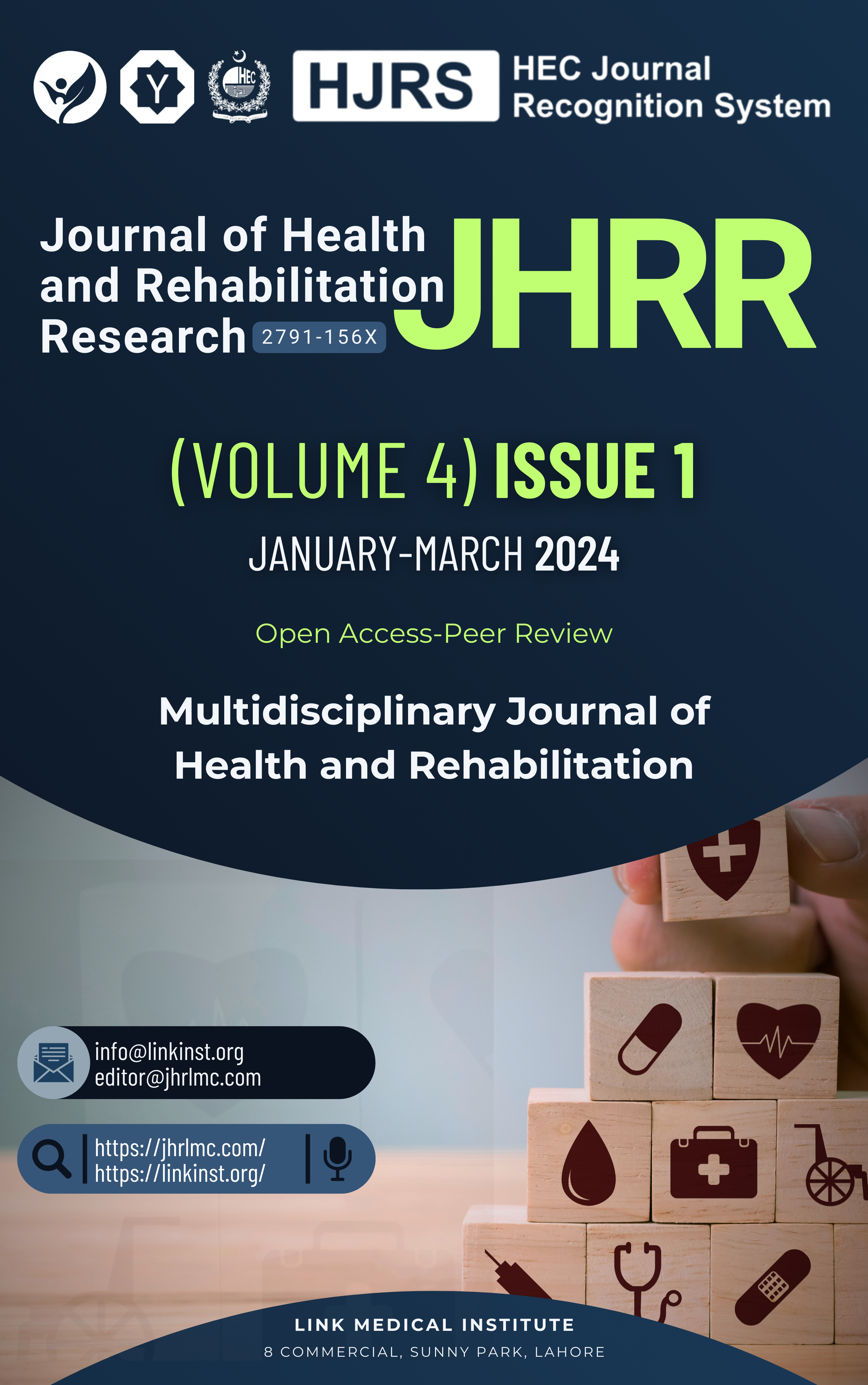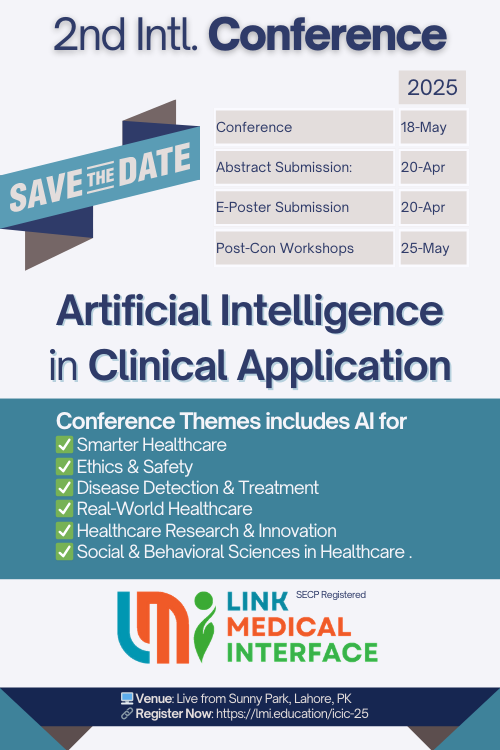Efficacy and Safety of Transarterial Chemoembolization (TACE) in Patients with Hepatocellular Carcinoma (HCC) and Assessment of Health Related Quality of Life (HRQoL) using CLDQ©
DOI:
https://doi.org/10.61919/jhrr.v4i1.715Keywords:
Hepatocellular Carcinoma, Transarterial Chemoembolization, TACE, HRQoL, Liver Cancer, Palliative Care, Treatment Efficacy, Sorafenib, Tumor ResponseAbstract
Background: Hepatocellular carcinoma (HCC) is a leading cause of cancer-related mortality globally, with its management presenting significant clinical challenges, especially in advanced stages. Transarterial chemoembolization (TACE) offers a palliative treatment option, but the evidence on its impact on Health-Related Quality of Life (HRQoL) and its efficacy across different patient subgroups, particularly in elderly populations, remains limited.
Objective: This study aimed to assess the safety and efficacy of TACE in patients with HCC and evaluate its impact on HRQoL, focusing on patient subgroups including those with advanced age and varying stages of liver function.
Methods: In this prospective observational study, 140 patients with HCC undergoing TACE at a single center were enrolled. Patients were assessed for tumor response using the modified RECIST (mRECIST) criteria, complications post-TACE, changes in liver function as per Child-Pugh classification, and HRQoL using the Chronic Liver Disease Questionnaire (CLDQ). The association of tumor response with demographic and clinical factors was also analyzed. Statistical significance was determined using chi-square tests for categorical variables and paired t-tests for continuous variables.
Results: Tumor response rates were: Complete Response (CR) 14%, Partial Response (PR) 53.7%, Stable Disease (SD) 8.1%, and Progressive Disease (PD) 24.3%. Portal Vein Thrombosis (PVT) post-TACE was observed in 45.7% of patients. Immediate complications were predominantly vomiting (50%) and nausea (44.1%). At 6 weeks follow-up, anorexia (35.3%) and Post-embolization Syndrome (PSE) (19.9%) were the most common complaints. HRQoL showed significant improvement in all domains post-TACE (P=0.0001). Significant associations were found between tumor response and baseline BCLC stage, PVT status, and the use of Sorafenib, among other factors.
Conclusion: TACE demonstrates significant efficacy in improving tumor response and HRQoL in HCC patients, with a manageable safety profile. It is notably effective in younger patients, females, and those with less advanced disease. The study underscores the potential of TACE as a viable treatment option across a broader spectrum of HCC patients, including those traditionally considered at higher risk.
Downloads
References
Kim KW, Van den Abbeele AD. Evolution of Transarterial Chemoembolization for the Treatment of Liver Cancer. Radiology. 2019;293(3):704-6.
Hafeez Bhatti AB, Dar FS, Waheed A, Shafique K, Sultan F, Shah NH. Hepatocellular Carcinoma in Pakistan: National Trends and Global Perspective. Gastroenterology research and practice. 2016; 2016:5942306.
Han K, Kim JH. Transarterial chemoembolization in hepatocellular carcinoma treatment: Barcelona clinic liver cancer staging system. World journal of gastroenterology. 2015;21(36):10327-35.
Song MJ, Bae SH, Lee JS, Lee SW, Song DS, You CR, et al. Combination transarterial chemoembolization and radiofrequency ablation therapy for early hepatocellular carcinoma. The Korean journal of internal medicine. 2016;31(2):242-52.
Viveiros P, Riaz A, Lewandowski RJ, Mahalingam D. Current State of Liver-Directed Therapies and Combinatory Approaches with Systemic Therapy in Hepatocellular Carcinoma (HCC). Cancers. 2019;11(8).
Younossi ZM, Stepanova M, Henry L. Performance and Validation of Chronic Liver Disease Questionnaire-Hepatitis C Version (CLDQ-HCV) in Clinical Trials of Patients with Chronic Hepatitis C. Value in health : the journal of the International Society for Pharmacoeconomics and Outcomes Research. 2016;19(5):544-51.
Schicho A, Pereira PL, Michalik K, Beyer LP, Stroszczynski C, Wiggermann P. Safety and efficacy of transarterial chemoembolization with degradable starch microspheres (DSM-TACE) in the treatment of secondary liver malignancies. OncoTargets and therapy. 2018;11:345-50.
Lencioni R, Llovet JM. Modified RECIST (mRECIST) assessment for hepatocellular carcinoma. Seminars in liver disease. 2010;30(1):52-60.
Nishikawa H, Osaki Y, Kita R, Kimura T, Ohara Y, Takeda H, et al. Comparison of transcatheter arterial chemoembolization and transcatheter arterial chemotherapy infusion for patients with intermediate-stage hepatocellular carcinoma. Oncology reports. 2014;31(1):65-72.
Llovet JM, Bruix J. Systematic review of randomized trials for unresectable hepatocellular carcinoma: Chemoembolization improves survival. Hepatology (Baltimore, Md). 2003;37(2):429-42.
Roth GS, Hernandez O, Daabek N, Brusset B, Teyssier Y, Ghelfi J, et al. Safety and Efficacy of Transarterial Chemoembolization in Elderly Patients with Intermediate Hepatocellular Carcinoma. Cancers. 2022;14(7).
Granito A, Bolondi L. Non-transplant therapies for patients with hepatocellular carcinoma and Child-Pugh-Turcotte class B cirrhosis. The Lancet Oncology. 2017;18(2):e101-e12.
Hartrumpf KJ, Marquardt S, Werncke T, Murray T, Kirstein MM, Vogel A, et al. Quality of life in patients undergoing repetitive TACE for the treatment of intermediate stage HCC. Journal of cancer research and clinical oncology. 2018;144(10):1991-9.
Kloeckner R, Weinmann A, Prinz F, Pinto dos Santos D, Ruckes C, Dueber C, et al. Conventional transarterial chemoembolization versus drug-eluting bead transarterial chemoembolization for the treatment of hepatocellular carcinoma. BMC cancer. 2015;15:465.
Llovet JM, Ricci S, Mazzaferro V, Hilgard P, Gane E, Blanc J-F, et al. Sorafenib in Advanced Hepatocellular Carcinoma. New England Journal of Medicine. 2008;359(4):378-90.
Liu X, Wang Z, Chen Z, Liu L, Ma L, Dong L, et al. Efficacy and Safety of Transcatheter Arterial Chemoembolization and Transcatheter Arterial Chemotherapy Infusion in Hepatocellular Carcinoma: A Systematic Review and Meta-Analysis. Oncology research. 2018;26(2):231-9.
Wu J, Li A, Yang J, Lu Y, Li J. Efficacy and safety of TACE in combination with sorafenib for the treatment of TACE-refractory advanced hepatocellular carcinoma in Chinese patients: a retrospective study. OncoTargets and therapy. 2017;10:2761-8.
Ahmed S, de Souza NN, Qiao W, Kasai M, Keem LJ, Shelat VG. Quality of Life in Hepatocellular Carcinoma Patients Treated with Transarterial Chemoembolization. HPB surgery : a world journal of hepatic, pancreatic and biliary surgery. 2016;2016:6120143.
Pinter M, Trauner M, Peck-Radosavljevic M, Sieghart W. Cancer and liver cirrhosis: implications on prognosis and management. ESMO open. 2016;1(2):e000042.
Shun SC, Chen CH, Sheu JC, Liang JD, Yang JC, Lai YH. Quality of life and its associated factors in patients with hepatocellular carcinoma receiving one course of transarterial chemoembolization treatment: a longitudinal study. The oncologist. 2012;17(5):732-9.
Wible BC, Rilling WS, Drescher P, Hieb RA, Saeian K, Frangakis C, et al. Longitudinal quality of life assessment of patients with hepatocellular carcinoma after primary transarterial chemoembolization. Journal of vascular and interventional radiology : JVIR. 2010;21(7):1024-30.
Xing M, Webber G, Prajapati HJ, Chen Z, El-Rayes B, Spivey JR, et al. Preservation of quality of life with doxorubicin drug-eluting bead transarterial chemoembolization for unresectable hepatocellular carcinoma: Longitudinal prospective study. Journal of gastroenterology and hepatology. 2015;30(7):1167-74.
Downloads
Published
How to Cite
Issue
Section
License
Copyright (c) 2024 Ammara Abdul Majeed, Syed Muhammad Zahid Azam, Hafeezullah Shaikh, Nouman Al Qamri, Abdul Basit Shaikh

This work is licensed under a Creative Commons Attribution 4.0 International License.
Public Licensing Terms
This work is licensed under the Creative Commons Attribution 4.0 International License (CC BY 4.0). Under this license:
- You are free to share (copy and redistribute the material in any medium or format) and adapt (remix, transform, and build upon the material) for any purpose, including commercial use.
- Attribution must be given to the original author(s) and source in a manner that is reasonable and does not imply endorsement.
- No additional restrictions may be applied that conflict with the terms of this license.
For more details, visit: https://creativecommons.org/licenses/by/4.0/.






